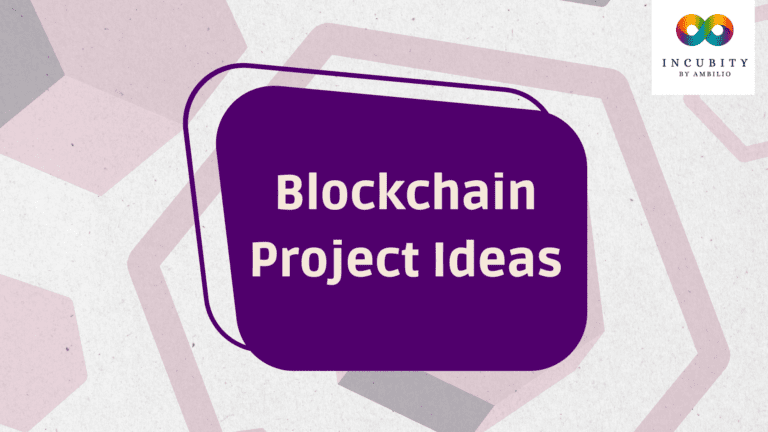A ledger is a digital record of financial transactions. It is used to track and manage financial information. Ledgers play a crucial role in blockchain technology as they form the backbone of the technology by recording and storing all the transactions on a decentralized network. The use of ledgers in blockchain technology brings a new level of security, transparency, and immutability to the financial industry. With the increasing demand for secure and transparent financial systems, the importance of ledgers in blockchain technology is only set to grow.
This article provides an in-depth overview of ledgers in blockchain technology. Starting with an explanation of what a ledger is and its importance in the financial industry, it then delves into how ledgers work within the blockchain network. The article also covers Hyperledger, an open-source project for building private, permissioned blockchain networks, and its various use cases. The article concludes with a simple Python code for creating a ledger in blockchain. The article aims to provide a comprehensive understanding of ledgers in blockchain technology and their potential in revolutionizing the financial industry.
Ledgers in Blockchain
Ledgers are a fundamental component of blockchain technology. They are essentially a chain of blocks that store and record all transactions on a decentralized network. Each block in the ledger contains a list of transactions and is linked to the previous block through a cryptographic hash, creating a public record of all transactions on the blockchain network.
The use of ledgers in blockchain technology brings several advantages such as immutability, transparency, and security. Once a transaction is added to the ledger, it cannot be altered or deleted, providing a tamper-proof record of all transactions. This ensures the integrity of the ledger and improves transparency and trust in the system. Additionally, ledgers are decentralized, meaning that they are maintained by a network of users rather than a central authority, making them more resistant to tampering or failures.
Famous examples of blockchain ledgers include Bitcoin, Ethereum, and Hyperledger. Bitcoin uses a ledger to track and record all transactions on its network, while Ethereum utilizes a ledger to execute and store smart contracts. Hyperledger is an open-source ledger platform that allows businesses to build their own blockchain applications with a higher degree of flexibility and configurability.
Hyperledger
Hyperledger is an open-source, modular platform for building enterprise-grade blockchain applications. It is a collection of tools, libraries, and frameworks for building and deploying blockchain applications in various industries.
There are currently several different projects within the Hyperledger ecosystem, each with its own unique set of features and capabilities. Some of the most notable Hyperledger projects include:
- Hyperledger Fabric: This is a permissioned blockchain platform that allows for the creation of private, permissioned networks. It provides a modular architecture that allows for flexibility and configurability, as well as support for smart contracts and chaincode.
- Hyperledger Sawtooth: This is a modular platform for building, deploying, and running distributed ledgers. It supports both permissioned and permissionless networks and includes a unique consensus algorithm called the “Proof of Elapsed Time” that is designed to be energy-efficient.
- Hyperledger Indy: This is a decentralized identity platform that allows for the creation of self-sovereign identities. It provides a set of tools and libraries for building decentralized identity systems and supports the use of verifiable credentials.
- Hyperledger Iroha: This is a simple, modular, and easy-to-use blockchain platform that is designed for mobile and web applications. It includes a consensus algorithm called “yac”, and supports easy integration with other systems.
- Hyperledger Burrow: This is a permissioned smart contract machine that is built on the Ethereum Virtual Machine (EVM). It is focused on providing a modular architecture that allows for flexibility and configurability
- Hyperledger Aries: This is a set of libraries and frameworks for building and deploying decentralized identity systems. It supports the use of verifiable credentials and enables the creation of self-sovereign identities.
Each of these projects has its own unique set of features and capabilities, and can be used to support different use cases across various industries. They all are open-source and are built to support enterprise-grade use cases, providing security, scalability, and flexibility for building and deploying blockchain applications.
One real-life example of using a feature of Hyperledger is the use of channels in the supply chain industry. In a supply chain, multiple parties, such as manufacturers, logistics providers, and retailers, need to share information about the movement of goods. However, not all parties need to see all the information, and some information should only be visible to certain parties.
Hyperledger Fabric allows for the creation of channels, which enable participants to only see a subset of the transactions on the network. This allows for the creation of a private, permissioned network where only authorized parties can view the transactions relevant to them.
For example, a retailer could create a channel with a manufacturer to track the movement of goods from the factory to the warehouse. The retailer and the manufacturer can see all the transactions on this channel, but other parties, such as logistics providers, would not have access to this information. This feature allows for better security and privacy in the supply chain, as well as enabling more efficient communication between parties.
One of the key features of Hyperledger is its focus on privacy and security. It allows for the creation of private, permissioned networks, where only authorized participants can access and view the transactions on the ledger. This is in contrast to public blockchains, like Bitcoin, where all transactions are visible to anyone on the network. Additionally, Hyperledger allows for the use of channels, which enable participants to only see a subset of the transactions on the network.
Another important feature of Hyperledger is its flexibility and configurability. It allows for the creation of custom ledger solutions that can be tailored to the specific needs of different industries.
Creating a Ledger Using Python
In other articles, we have created blockchains using Python. As a ledger is a blockchain of transactions, the process of building one and testing it will be pretty much the same.
| import hashlib import datetime class Block: def __init__(self, timestamp, transactions, previous_hash, nonce, difficulty): self.timestamp = timestamp self.transactions = transactions self.previous_hash = previous_hash self.nonce = nonce self.difficulty = difficulty self.hash = self.calc_hash() def calc_hash(self): sha = hashlib.sha256() sha.update(str(self.timestamp).encode(‘ascii’) + str(self.transactions).encode(‘ascii’) + str(self.previous_hash).encode(‘ascii’) + str(self.nonce).encode(‘ascii’)) return sha.hexdigest() def mine_block(self, difficulty): prefix = ‘0’ * difficulty while self.hash[:difficulty] != prefix: self.nonce += 1 self.hash = self.calc_hash() def __str__(self): return f’Block hash: {self.hash}\nTimestamp: {self.timestamp}\nPrevious hash: {self.previous_hash}\nTransactions: {self.transactions}\nNonce: {self.nonce}\nDifficulty: {self.difficulty}\n’ class Blockchain: def __init__(self): self.chain = [Block(datetime.datetime.utcnow(), [“No Transactions, This is the Genesis Block”], “0”, 0, 2)] def add_block(self, transactions): previous_hash = self.chain[-1].hash difficulty = self.chain[-1].difficulty + 1 new_block = Block(datetime.datetime.utcnow(), transactions, previous_hash, 0, difficulty) new_block.mine_block(difficulty) self.chain.append(new_block) def print_blockchain(self): for i, block in enumerate(self.chain): print(f’Block {i}:\n{block}’) blockchain = Blockchain() blockchain.add_block([“A -> B : 1.3”,“A -> C : 0.7”,“C -> G : 2.1”]) blockchain.add_block([“H -> B : 0.2”,“B -> F : 1.23”,“H -> R : 2.8”]) blockchain.add_block([“N -> M : 0.7”]) blockchain.print_blockchain() |
Block 0:
Block hash: 8b588857634ac1060c41b990911f9bc2786c003d6376684df433cafbe311809f
Timestamp: 2023-01-24 19:21:24.474163
Previous hash: 0
Transactions: [‘No Transactions, This is the Genesis Block’]
Nonce: 0
Difficulty: 2
Block 1:
Block hash: 0008d7cd81b7b2f09be12ec9ddbb1055aec9e8005eb74f9eac0199c51489f405
Timestamp: 2023-01-24 19:21:24.474163
Previous hash: 8b588857634ac1060c41b990911f9bc2786c003d6376684df433cafbe311809f
Transactions: [‘A -> B : 1.3’, ‘A -> C : 0.7’, ‘C -> G : 2.1’]
Nonce: 6763
Difficulty: 3
Block 2:
Block hash: 000036d1e3002d2b48d892f6d2ccefdf6f12ca31a1080286df900cbd7ad43e61
Timestamp: 2023-01-24 19:21:24.517162
Previous hash: 0008d7cd81b7b2f09be12ec9ddbb1055aec9e8005eb74f9eac0199c51489f405
Transactions: [‘H -> B : 0.2’, ‘B -> F : 1.23’, ‘H -> R : 2.8’]
Nonce: 63609
Difficulty: 4
Block 3:
Block hash: 000005c0360be1ca74fe5aa068af775a165a7661693673e290edbd1a73a35443
Timestamp: 2023-01-24 19:21:24.806265
Previous hash: 000036d1e3002d2b48d892f6d2ccefdf6f12ca31a1080286df900cbd7ad43e61
Transactions: [‘N -> M : 0.7’]
Nonce: 844325
Difficulty: 5
This code is a simple implementation of a ledger using Python. It defines two classes, ‘Block’ and ‘Blockchain’, which are used to create and manage the blockchain.
The ‘Block’ class has the attributes:
- timestamp: the time that the block is created.
- transactions: a list of transactions that are stored in the block.
- previous_hash
- nonce
- difficulty
- hash
And these methods:
- calc_hash(): Calculate the hash of the block.
- mine_block(difficulty): Mines the block.
- __str__(): This method returns a string representation of the block, displaying its hash, timestamp, previous hash, transactions, nonce, and difficulty.
The ‘Blockchain’ class has one attribute, chain, and several methods:
- __init__()
- add_block(transactions): This method adds a new block to the blockchain by creating a new block with the current timestamp, the provided transactions, the previous block’s hash, a nonce of 0, and increased difficulty. Then it mines the block using the ‘mine_block()’ method.
- print_blockchain()
The code creates an instance of the ‘Blockchain’ class, adds three blocks to it with sample transactions, then displays them.
For an extended explanation of the code’s attributes and methods, you can check this article (https://incubity.ambilio.com/complete-guide-to-blockchain-mining-in-python-for-beginners).
When you try this code on your machine, the hashes of the blocks will be different every time you run the code because the timestamp value is included in creating the hash of the block, and is different each time the code is run.
The concept behind increasing the difficulty every time a new block is mined is to control the rate at which new blocks are added to the blockchain. If the difficulty is too low, new blocks will be added too quickly, and the blockchain will become too large. On the other hand, if the difficulty is too high, it will take too long for new blocks to be added, and the blockchain will not be able to process transactions quickly enough.
By adjusting the difficulty based on the performance of the network, the blockchain can maintain a consistent rate of block production, regardless of the number of miners or the amount of computing power available. This is important to ensure the stability and security of the blockchain.
In the code that I provided, the difficulty is incremented by 1 for each new block, but in reality, the difficulty is adjusted based on a more complex algorithm that takes into account the time it took to mine the previous blocks, the total computational power of the network, and other factors. This ensures that the rate of block production remains consistent.
Final Words
In conclusion, this article has provided a comprehensive overview of ledgers in blockchain technology, how they work, the advantages they bring, and famous examples. It starts by explaining the concept of a ledger and its importance in the financial industry, then moves into how ledgers work within the blockchain network. It covers the Hyperledger project, an open-source platform for building private, permissioned blockchain networks, and its various use cases. The article concludes by providing a simple Python code for creating a ledger in the blockchain.
As technology continues to evolve, ledgers will play an increasingly important role in shaping the future of secure and transparent financial systems.







